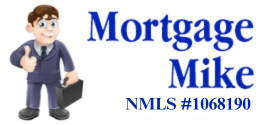Deciding if a Reverse Mortgage Makes Sense for You
A reverse mortgage, specifically a federal government-sponsored Home Equity Conversion Mortgage (HECM), has a lot of moving parts that may make the product concept intimidating for some people. For those who are looking for alternative ways to try and create more cash flow in retirement, there are clear benefits as well as some inherent complexities that should be considered before any senior decides to sign on the dotted line.
This is the perspective shared by Keith Whitcomb, Retirement Management Analyst (RMA) at financial information website The Street.
“A 2019 Philadelphia Federal Reserve study examined the influence that home ownership has on what’s called the ‘retirement saving puzzle,’” Whitcomb writes. “The ‘puzzle’ is the inability to explain why ‘many people die with significant savings.’ Their analysis showed that owning a home has a positive impact on the preservation of assets as people age.”
Part of this is due to certain borrowing constraints that exist on retirees, Whitcomb said, citing an assertion made by the Federal Reserve. If someone is unable to draw on their home’s equity and chooses not to sell that home, then the full value of the home “sits on your balance sheet as a long-term asset until you die.” Therefore, housing plays a critical role in this “puzzle.”
One potential solution for such a puzzle could be a reverse mortgage, Whitcomb says. Coming with several different disbursement options, the amount of loan proceeds a borrower can potentially get is based on a number of factors including the value of the home, and the age of the borrower, he says. One key question that a potential borrower should ask comes from whether or not the reverse mortgage proposition is cost-effective, he explains.
“Basically, the higher the home value and the older the borrower, the more economically advantageous the HECM becomes,” he says. “But remember, this [only applies to] the initial cost of getting a HECM. All-in costs are also a function of how much and how long funds are borrowed, interest rates (e.g. Constant Maturity Treasury + Margin with a 5% cap), and ongoing service fees.”
It then becomes necessary to look at different available debt structures, including fixed rate, line of credit or tenure options. The fixed rate’s advantages can change based on an individual’s financial circumstances, but Whitcomb appears to take more interest in line of credit and tenure options.
“[T]he initial cost to close on a line of credit is pretty reasonable on a relative basis, if perhaps not on an absolute one,” he says. “And, in a unique and counterintuitive twist, the borrowing capacity of an unused line actually grows as a function of interest rates. Over time, this can further reduce your cost per dollar of borrowing capacity.”
The tenure option has similar functions to an annuity, but comes with at least one key advantage over traditional annuities, he says.
“In many ways, tenure is an annuity purchased over time in comparison to insurance products that generally require payment in full before you receive any benefits,” he says. “This makes it a very interesting retirement income option as you get much of the benefit of an annuity without the significant upfront cost.”
There are some caveats to that potential advantage based on a borrower’s individual situation, but that’s a general theme of Whitcomb’s overall perspective on reverse mortgages: they work well for some, but may require additional considerations for others.
“The takeaway here is that the HECM has lots of moving parts, so there isn’t a generalized rule of thumb that can easily be applied to provide you with a simple ‘go/no-go’ signal on this decision,” he says. “And yeah, it takes a lot of money, but a HECM may make sense if you can use it advantageously when positioning your financial resources for retirement.”
Article by Chris Clow on reversemortgagedaily.com

